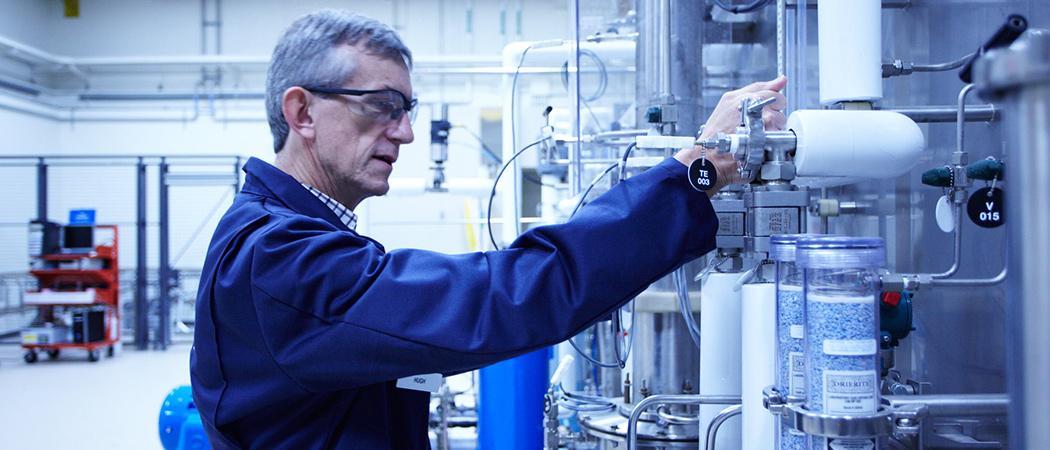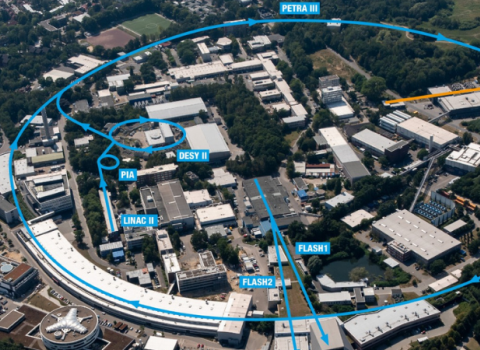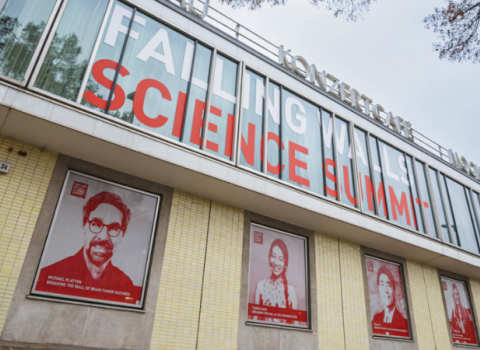The Commission plans to set a maximum quota for Chinese electrolysers in future green hydrogen tenders

Hydrogen research. Photo: Flickr
Science|Business - Table.Media partnershipScience|Business has partnered with Table.Media, a leading source of news about higher education and research in Germany. Each week, we are publishing one of each other’s stories to give readers an even broader range of insight into R&D policy across Europe. |
The European Commission plans to restrict the use of Chinese technology for the production of green hydrogen in Europe.
Last week, Brussels published the conditions for the second auction of the European Hydrogen Bank, which include new resilience criteria for electrolysers. According to the publication, participating projects would have to limit the proportion of electrolysis stacks from China to a maximum of 25% to ensure a diversified supply chain.
The Commission justifies the restrictions by stating that more than half of the global electrolyser manufacturing capacity is already located in China. “It is assessed that there is a significant risk of increased and irreversible dependency of the EU on imports of electrolysers originating in China, which may threaten the EU's security of supply,” it says.
The European hydrogen industry welcomed the move. "The new terms set out for the second call of the Hydrogen Bank create a fertile environment for companies to invest in Europe," commented Hydrogen Europe chief executive Jorgo Chatzimarkakis.
The EU has provided €1.2 billion from its Innovation Fund for the second auction. The sum will be used to pay a fixed subsidy for up to ten years for every kilogram of hydrogen or its derivatives produced in the European Economic Area (EEA). The subsidy amount will be determined in an auction from 3 December until February 2025.
The EU has already created a legal basis for resilience criteria in public procurement procedures with the Net-Zero Industry Act. Earlier this month, climate commissioner Wopke Hoekstra lamented an oversupply of Chinese electrolysers "at ever lower prices" entering the market. "The next auction will be different. We will have explicit criteria to build European electrolyser supply chains,” he said.
During the first auction earlier this year, 20 out of 130 bids involved Chinese electrolysers. According to the Reuters news agency, it will be decided by November how many of the seven successful projects will be built with Chinese equipment. The winners must then submit the relevant contract documents to the European climate agency CINEA.
The new diversification criterion is designed in such a way that it gives European manufacturers leeway when installing cheaper Chinese technology. It does not cover the entire plant and only defines a quota for its centrepiece – the stacks – and individual stages of the value chain.
This strategy could pave the way for other net-zero goods, such as batteries, which also face the trade-off between affordability on the one side and industrial and safety policy on the other.
Cybersecurity requirements
However, the Commission also introduced a resilience criterion for digital components in the second hydrogen auction. In the future, participants will have to submit a cybersecurity plan "outlining how, in order to ensure the security of the installation, the operational control of the installation remains within an entity established in the EEA and the data are stored within the EEA". Failure to do so will result in the Commission not only refusing to grant subsidies, but also imposing a fine of 8% of the subsidy amount.
François Paquet, managing director of the Renewable Hydrogen Coalition, praised the announcement, saying that the Commission decided to act proactively rather than reactively this time. The EU has probably irretrievably lost the solar industry to China, while Chinese producers have also gained a strong foothold in the wind industry.
The hydrogen bank's cybersecurity criterion could set an example for the wind industry. As the turbines must be regularly monitored, controlled and maintained remotely to fulfill operational safety and warranty requirements, it would represent a significant hurdle for Chinese companies.
However, the Renewable Hydrogen Coalition complains that even the strictest resilience criteria are of little help if demand for renewable hydrogen fails to materialise.
"Now the funding gap for renewable hydrogen remains the biggest obstacle," said Paquet, who also called on the member states to create lead markets for green industrial goods such as steel, chemicals, and fertilisers. Several companies have shelved electrolysis projects that have not been funded by the hydrogen bank in recent months, citing increased costs and a lack of demand.






 A unique international forum for public research organisations and companies to connect their external engagement with strategic interests around their R&D system.
A unique international forum for public research organisations and companies to connect their external engagement with strategic interests around their R&D system.